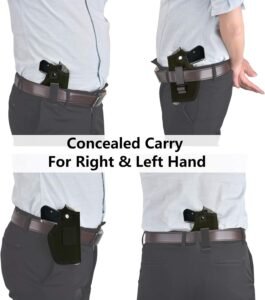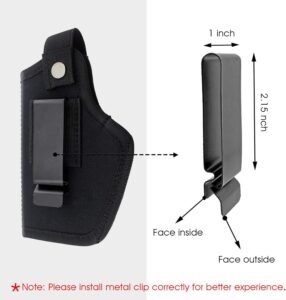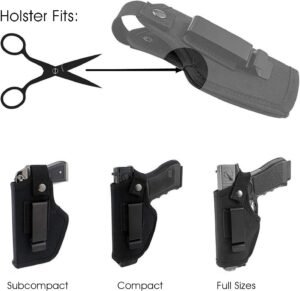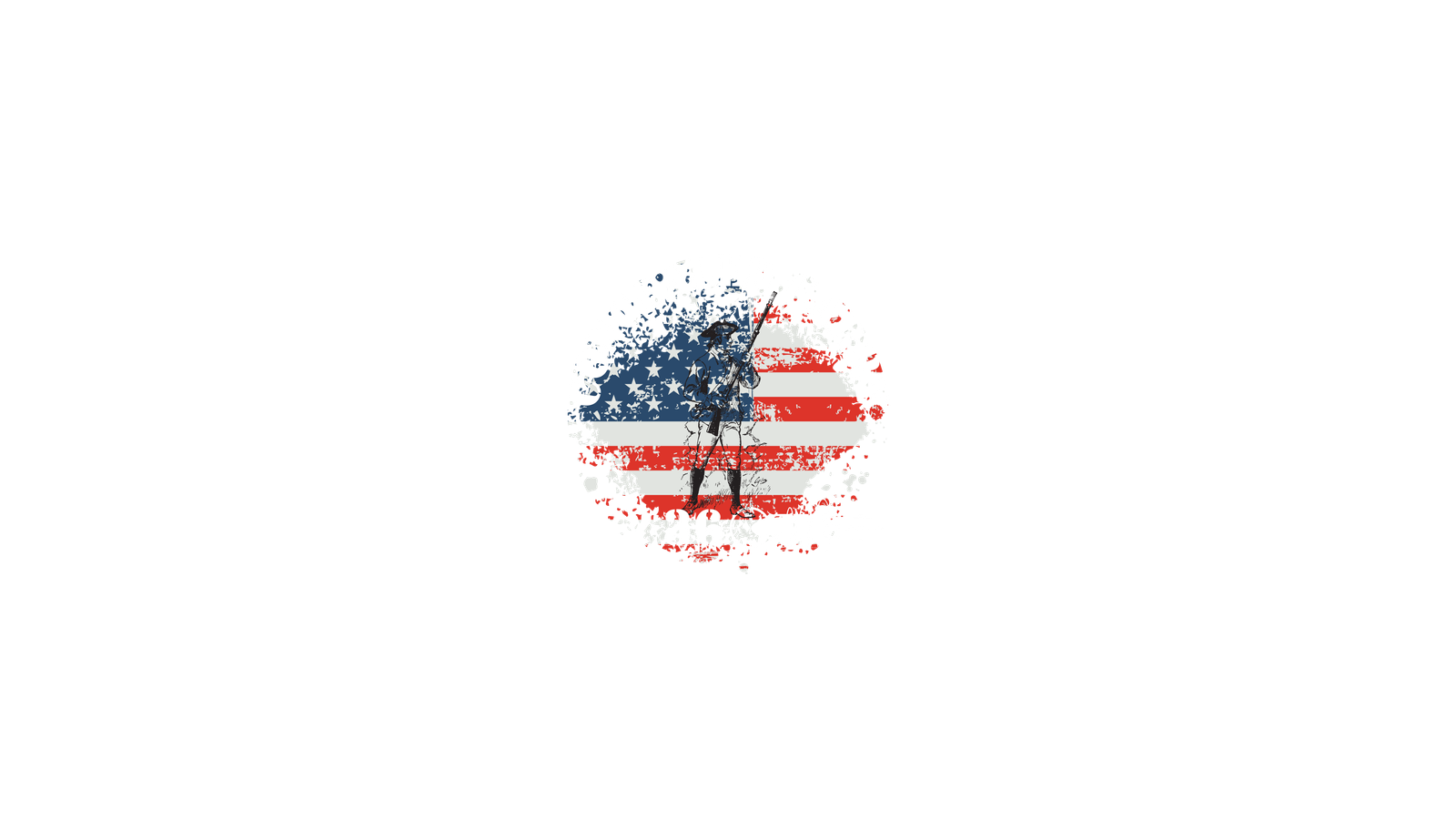When it comes to concealed carry, comfort is key. The role of holsters in this practice cannot be understated, as they play a vital role in ensuring your firearm stays securely in place while also providing you with the comfort necessary for all-day wear. At Concealed Carry 360, we understand the importance of finding the perfect holster that suits your needs, preferences, and body type. That’s why we offer unbiased gear reviews and expert insights to guide you in making the best choice. With our practical guidance and extensive knowledge, you can confidently carry your firearm knowing that comfort and security go hand in hand.

Understanding the Importance of Comfort
Comfort plays an essential role in the world of concealed carry. When carrying a firearm on a daily basis, it is crucial to prioritize comfort to ensure a pleasant and manageable experience. The significance of comfort extends beyond mere convenience, as it can greatly impact your overall well-being and ability to effectively carry concealed.
The significance of comfort in concealed carry
Carrying a concealed firearm can be a challenge, and discomfort from your holster can exacerbate this challenge. If your holster is uncomfortable, you may find yourself constantly adjusting and readjusting, which not only draws attention to your firearm but also detracts from your focus and concentration. Comfort is key in ensuring a seamless and discreet carry.
Effect of an uncomfortable holster on daily life
An uncomfortable holster can have substantial ramifications on your daily life. From causing physical discomfort and irritation to impacting your mental concentration and focus, an ill-fitting holster can turn a typically enjoyable day into an arduous one. Additionally, discomfort from your holster can lead to increased stress and decreased confidence in your ability to carry concealed effectively.
Lessons from experienced concealed carriers
Experienced concealed carriers understand the importance of comfort firsthand. They have learned through trial and error that finding the right holster is essential to ensuring a comfortable carry. They have also discovered that comfort directly impacts their ability to carry concealed consistently, confidently, and effectively. Listening to their experiences and taking their advice can help you optimize comfort in your own concealed carry journey.
Factors Influencing Holster Comfort
Several factors contribute to the overall comfort of a holster. Understanding these factors will help you make informed decisions when choosing the right holster for your needs.
Material selection and its impact on comfort
The material used in the construction of a holster is a significant factor in determining its comfort level. Different materials offer varying levels of flexibility, breathability, and skin-friendly properties. It’s important to consider your personal preferences and any potential sensitivities when choosing a holster material.
Holster design and its effect on wearer comfort
The design of a holster can greatly influence comfort. Factors such as the angle of the holster, the accessibility of the firearm, and the overall contour of the holster can impact how it feels when worn. Paying attention to these design elements can help you find a holster that fits comfortably and securely against your body.
The role of size and weight in comfort
The size and weight of your firearm, as well as the overall dimensions of the holster, can significantly impact comfort. A properly fitting holster that accommodates the size and weight of your firearm will distribute the weight evenly, reducing discomfort and strain on your body. Additionally, a well-sized holster minimizes the risk of printing, ensuring your concealed carry remains discreet.
Different Types of Holsters
Holsters come in various styles, each offering unique advantages in terms of comfort and accessibility. Exploring the different types of holsters will help you identify which option may best suit your needs.
Inside-the-Waistband (IWB) holsters
IWB holsters are designed to be worn inside the waistband of your pants, providing a discreet and comfortable option for concealed carry. The placement of the holster against your body offers excellent concealment, and many IWB holsters feature adjustable cant and ride height, allowing for a customized fit.
Outside-the-Waistband (OWB) holsters
OWB holsters are worn outside the waistband, attached to your belt or waistband. While typically less concealed than IWB holsters, OWB holsters offer increased accessibility and comfort for those who prefer an open carry or need to draw quickly. They are available in various designs and can be tailored to fit different body types and preferences.
Shoulder holsters
Shoulder holsters are designed to be worn across the shoulder and under the opposite arm. They distribute the weight of the firearm evenly, providing a comfortable option for those who prefer an alternative to waistband holsters. Shoulder holsters are particularly suitable for individuals who spend long periods seated or driving.
Ankle holsters
Ankle holsters are ideal for individuals who prioritize deep concealment or have limited options for carrying on their waistband. While ankle holsters may be less comfortable for all-day wear, they offer excellent concealment and accessibility for those who need to carry discreetly in certain situations.
Appendix holsters
Appendix holsters are worn in the front of the body, typically in the appendix position (between the hip bone and navel). This position ensures quick and easy access to your firearm while maintaining a high level of concealment.
Pocket holsters
Pocket holsters are designed to fit securely inside your pocket, providing a comfortable and discreet carry option. They prevent your firearm from moving around and minimize printing while ensuring quick access when needed.
Belly band holsters
Belly band holsters are versatile, wrap-around holsters that can be worn on the waist, abdomen, or chest. They offer excellent flexibility and adjustability, accommodating various body types and allowing for comfortable concealed carry in different positions.
Holster alternatives: Smart carry holsters, deep concealment holsters, etc.
In addition to the traditional holster options mentioned above, there are several alternative holster styles available to suit specific needs. Smart carry holsters, deep concealment holsters, and other innovative designs offer unique approaches to concealed carry, often prioritizing comfort and ease of use.
Holster Materials for Comfort
The choice of material can greatly affect the comfort of a holster. Understanding the characteristics of different materials will help you determine which option aligns best with your comfort preferences.
Leather holsters
Leather holsters are a popular choice due to their durability, aesthetics, and ability to conform to the shape of your body over time. They provide a comfortable and secure fit, while also offering a classic and timeless appearance. However, leather holsters may require additional care and maintenance to preserve their quality.
Kydex holsters
Kydex holsters are constructed from a durable thermoplastic material that offers excellent retention, protection, and comfort. They retain their shape well, ensuring a consistent fit for your firearm. Kydex holsters also provide a smooth draw and reholstering, while being resistant to moisture and temperature variations.
Nylon holsters
Nylon holsters are lightweight, affordable, and versatile. They offer good comfort and flexibility, thanks to their soft and pliable nature. However, nylon holsters may not provide the same level of retention and durability as other materials, and they may be more susceptible to wear and tear over time.
Neoprene holsters
Neoprene holsters are known for their soft and cushioning properties, providing excellent comfort for all-day carry. They are resistant to moisture, making them suitable for individuals with an active lifestyle or those who live in humid climates. However, neoprene holsters may be less rigid than other materials, potentially affecting firearm retention.
Holster Design Considerations
When selecting a holster for maximum comfort, it’s essential to consider various design elements that can significantly impact your overall carrying experience.
Cant and ride height
The cant refers to the angle at which the holster is positioned. Adjustable cant options allow you to customize the angle, ensuring optimal comfort and draw. Similarly, the ride height determines how high or low the holster sits on your waistband, allowing for better concealment and access to your firearm.
Retention systems and their impact on comfort
Retention systems are mechanisms that secure your firearm in the holster, providing both safety and comfort. Different retention systems, such as passive retention or adjustable retention screws, offer varying levels of security while still allowing for a smooth and quick draw.
Holster positioning options
Exploring the various positioning options for your holster can significantly impact comfort. Depending on your body type and preferences, you may find appendix carry, strong-side carry, or small-of-the-back carry more comfortable and accessible. Experimenting with different carry positions will help you determine the most comfortable and effective option for your needs.
Choosing the Right Holster for Individual Comfort
Finding the perfect holster for your comfort requires careful consideration of several factors. It’s essential to prioritize your individual needs and preferences to ensure a comfortable and reliable carry experience.
Finding the perfect fit
Holster fit is crucial to achieving comfort. Consider the dimensions and weight of your firearm, ensuring the holster you choose is specifically designed to accommodate your particular make and model. A properly fitting holster will not only enhance comfort but also ensure optimal access and retention.
Understanding body type and holster selection
Body type plays a vital role in holster selection. It’s important to consider your body’s unique contours, curves, and clothing choices when choosing a holster. Holsters suitable for one body type may not provide the same level of comfort and concealability for another. Researching and understanding your body type will guide you toward finding the most comfortable option.
Trial and error: Importance of testing multiple holsters
Finding the ideal holster for your comfort may require some trial and error. What works well for others may not necessarily work for you. Take the time to test multiple holsters, experimenting with different materials, designs, and carry positions. It’s through this process of trial and error that you’ll discover the holster that provides optimal comfort for your individual needs.

Additional Comfort-Enhancing Features
Holster comfort can be further enhanced through various additional features and accessories. These additions can assist in achieving a more comfortable and enjoyable carry experience.
Holster padding and cushioning
Holsters with padding or cushioning provide additional comfort and reduce potential pressure points against your body. Padding can also help to distribute the weight of your firearm more evenly, reducing the strain on specific areas.
Adjustable straps and buckles
Holsters with adjustable straps and buckles allow for a customized fit, ensuring maximum comfort and security. The ability to fine-tune the fit of your holster to your body type and clothing choices will enhance your overall carrying experience.
Holster accessories: Sweat guards, moisture-wicking materials, etc.
Some holsters offer additional accessories to enhance comfort, such as sweat guards or moisture-wicking materials. These features help manage sweat and moisture, preventing discomfort and prolonging the lifespan of your holster.
Holster Maintenance for Continued Comfort
To ensure continued comfort, proper maintenance and care of your holster are crucial. Implementing a regular maintenance routine will help preserve the quality and comfort of your holster over time.
Cleaning and proper care
Regularly clean your holster according to the manufacturer’s instructions to remove dirt, debris, and sweat buildup. Proper care will help maintain the holster’s shape, comfort, and overall functionality.
Replacing worn-out holsters
As holsters age, they may become less comfortable and lose their retention capabilities. Once a holster starts to show signs of wear and tear or no longer provides the comfort you need, it may be time to replace it. Prioritize your comfort and safety by periodically assessing the condition of your holster and replacing it when necessary.
Maintaining comfort as the holster breaks in
In some cases, holsters may require a break-in period to achieve optimal comfort. As you wear the holster regularly, it will gradually conform to your body shape, providing a more tailored fit and increased comfort. Be patient during this break-in period and continue to assess the holster’s comfort level to ensure a satisfactory carry experience.

Importance of Comfort in Concealed Carry Training
Comfort is not only essential during everyday concealed carry but also during training sessions. The comfort of your holster can significantly impact your ability to effectively train and prepare for potential self-defense scenarios.
The impact of discomfort on training effectiveness
Discomfort from your holster can hinder your ability to focus and concentrate during training sessions. It may distract you or lead to unnecessary adjustments, disrupting the flow of your training and diminishing its effectiveness. Prioritizing comfort will allow you to fully engage in your training and optimize your performance.
Fit for purpose: Holster comfort during different training scenarios
Different training scenarios may require different holster positions or carry methods. For example, if practicing drawing from a seated position, a shoulder holster may provide better comfort and accessibility compared to an IWB holster. Adapting your holster and carry method to the specific training scenario enhances comfort and prepares you for real-life situations.
Holster comfort and range of motion
Range of motion is critical during concealed carry training. An uncomfortable holster can restrict movement and impede your ability to perform certain actions efficiently. Opting for a holster that allows natural movement without hindrance or discomfort will facilitate a smoother and more effective training experience.
Conclusion
When it comes to concealed carry, comfort should never be overlooked. The right holster can enhance your overall carrying experience, allowing you to remain comfortable, focused, and confident throughout your day. By considering factors such as material selection, holster design, and individual body type, you can find the perfect balance between comfort, functionality, and concealment. Elevate your concealed carry journey by prioritizing comfort and enhancing your overall well-being and enjoyment of responsible firearm ownership.
